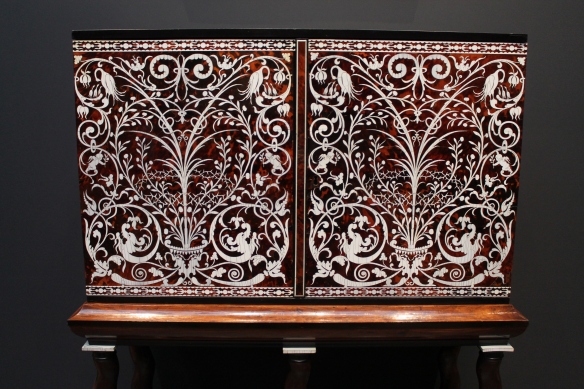

My birthday gift to myself was a day at the magnificent Rijksmuseum. And it wasn’t just the art that was the gift, it was the time. The luxury of free time – to wander leisurely from room to room, stopping in front of a painting, a tapestry or an exquisite silver goblet and gazing at it for as long as I desired, studying every detail and reading the information notice beside it. Antiques show us where we come from.
Museums are, of course, an education. But it’s usually not until adulthood that we appreciate the treasures held within. I visited the best of them as a child and teenager. In an effort to instil aesthetic values in their children, my English parents, bless them, took my sister and me all over Europe. We attended operas and visited museums and galleries. I was bored stiff. Opera perplexed me and museums were old and dusty. I remember gazing at gigantic tableaux of naked people, usually cowering before a snarling beast or something ominous from heaven, and all I could wonder was….where were their clothes? Perhaps if the symbolism of the painting had been explained to me, I would have understood something. But symbolism is a concept-metaphor not easily grasped by children.
Below is a portrait painted in 1652 by Johannes Verspronck. The sitter’s name is Maria van Strijp. As you can see by her jewellery and the finery of her clothing, Maria was an affluent woman. She lived in Haarlem, North Holland and was the wife of a wealthy cloth merchant. Verspronck‘s painting style shows attention to the depiction of clothing and jewellery. His precision is not stiff, but beautiful and quiet.



Cartwheel ruffs. What an odd accoutrement. Ruffs were highly luxurious garments, a potent symbol of status and wealth. Anyone who could afford to wear and maintain a ruff was clearly not doing any manual labor. They were made from starched linen and edged with lace. The fabric was put into a figure 8 pattern, called goffering, and sewn with gossamer threads.
Portrait of a Woman by Frans Hals, 1635 Portrait of Feyntje van Steenkiste by Frans Hals, 1635
Portrait of Feyntje van Steenkiste by Frans Hals, 1635 Look at this magnificent cabinet veneered with tortoiseshell and ivory.
Look at this magnificent cabinet veneered with tortoiseshell and ivory.


Delftware is blue and white pottery made in and around Delft in the Netherlands from the 16th to the 18th century.


From a distance I thought this painting was a Bruegel, but it wasn’t. It was painted by Hendrick Avercamp, a Dutchman born in Amsterdam in 1585. As one of the first landscape painters of the 17th-century Dutch school, Avercamp is famous for his winterscapes. Many of his paintings feature people ice skating.


Modern skaters today. This rink is in front of the museum. Notice the chairs. I don’t recall seeing that in other countries. Ah, the ever-pragmatic Dutch!


Happy Birthday, Juliette.
Thank you, Heidi. I wish you a truly excellent 2015.
Dear Juliet – We have always wanted to visit the Rijksmuseum and now you have brought a teeny part of it – through your eyes – to us. Very interesting indeed! Blog on! And, by the way, have a wonderful New Year….we’ll be watching your travels via your great blog.
Glad you enjoyed it! Thanks for your wishes. à bientôt.
Super! Best wishes to you for 2015.
Thanks so much. Same to you.
A belated birthday greeting to you, Juliet. For this year and all years to come. Love your blog.
Thanks, Sally! Best wishes for a great 2016.
This is really interesting. I’ve never been to this famous Dutch museum, but you’ve brought certain aspects of it to us. Please do more.
Thanks so much for this. A brief but interesting tutorial. You should do more.